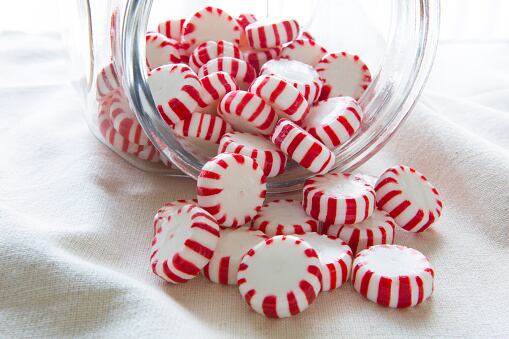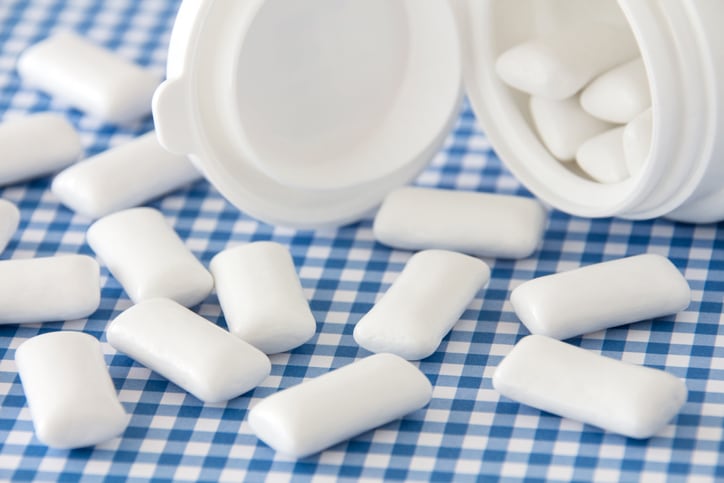As risk managers at the European Commission and in EU Member States consider appropriate regulatory action, the FDA told FoodNavigator-USA that it is now reviewing EFSA’s evaluation “to better understand the data and findings of the studies included in their review” in order to “determine what the implications may be for FDA’s safety assessment of titanium dioxide” in the US, where it is currently approved as a color additive exempt from certification (see box below).
Suppliers of food colors, meanwhile, have seen a sharp uptick in inquiries about how best to replace the whitening agent, which is used in a variety of well-known brands from Dentyne and Trident White to Stride sugar-free gum.
According to Thea Bourianne, manager, solutions consulting at Label Insight, more than 11,000 products in its database of US food and beverage products list titanium dioxide within the ingredient statement, led by non-chocolate candy (32%), followed by cupcakes and snack cakes (14%), cookies (8%), coated pretzels and trail mix (7%), baking decorations (6%), gum and mints (4%), and ice cream (2%).
She added: “It’s very likely that titanium dioxide is contained in far more food products because it is an exempt color, which doesn’t require explicit declaration on the ingredient statement.”
Sensient Food Colors: ‘We have seen a strong uptick in inquiries [about replacing TiO2]’
David Rigg, marketing director, global food colors at Sensient Colors, said Sensient has been working on TiO2 alternatives for a number of years “given the scrutiny coming from regulatory bodies and other organizations.”
He added: “We have seen a strong uptick in inquiries recently, specifically since France indicated it was suspending the use of titanium dioxide two years ago.
“While we are seeing an increase for natural colors in general, our titanium dioxide replacement alternatives are actually the most requested samples. Since the EFSA announcement, we have seen an additional increase in inquiries regarding our Avalanche product line.”
‘It is exceptionally challenging to replace TiO2 across all applications’
So how challenging it is to replace titanium dioxide in food products?
The go-to white pigment used in everything from gum and candies to pastries, chocolates, coffee creamers, cake decorations, fillings, sauces, pet food and powdered soft drinks, titanium dioxide has excellent heat, light, pH, and water-activity stability, said Rigg.
“It is exceptionally challenging to replace TiO2 across all applications. Titanium dioxide is an excellent whitening pigment and is also quite cost effective.” He also noted that there is no single product that can replace it across every application, prompting Sensient to develop a range of alternatives from a variety of sources with specific applications in mind.
“None of the Avalanche options use synthetic ingredients, but not all Avalanche products use the same base. It depends on whether opacity or whiteness (or both) is needed and also on regulatory status. In the US and Canada, many Avalanche options are color systems and can be labeled ‘vegetable juice’ for example.
“Over the past several years, we have continued to add and improve the suite of Avalanche solutions. For high-water activity applications, we do have alternatives that work quite well. We find the greatest challenge is in high heat retort applications.”
Closing the cost gap
Price can also be a barrier for formulators, added Rigg, who said Sensient had been quite successful in bringing costs down for some applications.
“There are generally no cost neutral options available. Over the past few years, we have worked hard at closing the cost gap between titanium dioxide and Avalanche, and been quite successful in some applications like panned confections.”
Rice starches
A&B Ingredients - which offers rice starches it claims are well suited to replace titanium dioxide in confectionery and chewing gum coatings, owing to their small particle size and natural whitening ability - told us it has also seen an uptick in inquiries.
Joe O’Neill, VP of sales and business development, added: “Our portfolio includes native and organic rice starches, all of which have small starch granules between 2 to 8 microns. The small granules act to fill in uneven surfaces on confectionery coatings and can create a smooth surface coating in products, such as breath mints and chewing gum. In line with our mission to offer clean label solutions from nature, the rice starches are an attractive alternative to titanium dioxide and can help with reducing chipping and cracking of the coatings. They are available in both conventional and organic forms.”
Colors exempt from certification such as annatto extract and titanium dioxide include pigments from natural sources such as vegetables, minerals, or animals. They are not subject to batch certification requirements, but are still color additives and FDA must approve them before they can be used in foods.
Certified color additives such as FD&C Yellow No. 5 or FD&C Blue No. 1 are synthetic colorings that are required to undergo certification every time a new batch is manufactured.

Titanium dioxide (titanium and oxygen TiO2) is a naturally occurring mineral that is mined from the earth then further processed and purified for use in consumer products. In the US market, it is classified as a color additive exempt from certification provided inclusion rates don’t top 1% by weight of the food.
On May 6, the European Food Safety Authority (EFSA - which is a scientific advisory body, not a regulator) issued an updated evaluation taking into account “new scientific evidence and data on nanoparticles,” and concluded that titanium dioxide “can no longer be considered safe as a food additive."
Titanium dioxide “contains at most 50% of particles in the nano range [under 100 nanometers] to which consumers may be exposed,” explained EFSA, although constituent particles under 30 nanometers in size accounted for less than 1% of particles: “We could not exclude genotoxicity concerns after consumption of titanium dioxide particles. After oral ingestion, the absorption of titanium dioxide particles is low, however they can accumulate in the body."
Although no clear correlation was observed between the physico‐chemical properties of titanium dioxide particles and the outcome of in vitro or in vivo genotoxicity assays, EFSA concluded that the particles "have the potential to induce DNA strand breaks and chromosomal damage, although not gene mutations."
Professor Matthew Wright, chair of EFSA’s working group on titanium dioxide, added: “Although the evidence for general toxic effects was not conclusive, on the basis of the new data and strengthened methods we could not rule out a concern for genotoxicity and consequently we could not establish a safe level for daily intake of the food additive.”
In a tweet following the announcement, EU health commissioner Stella Kyriakides said: "We will propose to ban its use in the EU," with discussions with Member States to start this month.
The UK Food Standards Agency told reporters that EFSA's opinion "will be scrutinized by the independent scientific advisory committees that advise the FSA, alongside existing scientific evidence. ‘This review will help decide what next steps are needed to safeguard consumers and will inform future policy."
- Read EFSA's scientific opinion

